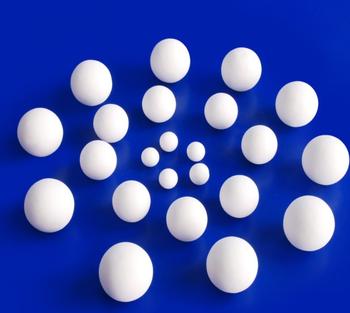 The data shows that since the beginning of September, the price of iron ore has increased from 90 US dollars per ton to 120 US dollars, an increase of about 30%. In November alone, the import volume of iron ore exceeded 65 million tons, a record high. The end of the iron ore tailings market challenged the steel industry, which has just returned to profitability.
The data shows that since the beginning of September, the price of iron ore has increased from 90 US dollars per ton to 120 US dollars, an increase of about 30%. In November alone, the import volume of iron ore exceeded 65 million tons, a record high. The end of the iron ore tailings market challenged the steel industry, which has just returned to profitability. The news said that if prices and prices rise together, does it mean that "crazy stones" will reappear? For this issue, the industry’s view is relatively easy. Zhang Changfu, secretary-general of the China Iron and Steel Association, said at the recent “My Steel†annual meeting that China’s crude steel production this year is expected to be 723 million tons, an increase of about 3% year-on-year. The estimated growth rate for the next year is only 2%, and the low growth trend is basically established.
The sharp slowdown in the growth of the Chinese steel industry has not affected the expansion of the mine. In the first three quarters of this year, Rio Tinto and BHP Billiton’s iron ore production increased by 30% and 10% respectively. “The growth rate of new mines is faster, and it is expected that the global new mine production will be around 100 million tons next year. From the balance of supply and demand, it will be officially shifted to oversupply,†said Gao Bo, a senior researcher at “My Steelâ€.
Although “crazy stones†are difficult to reproduce, the challenges faced by the Chinese steel industry have not diminished. The reason is that the price volatility of iron ore has greatly increased. Statistics show that this year's steel prices have fallen by only 20% from highs to lows, while the fall in iron ore exceeds 40%. The ore prices have been ups and downs, making the cost control of steel plants very tricky.
"If the price of minerals is only unilaterally rising, we can also cope with the increase in inventory. The rapid rise in ore prices, jump up and down, procurement is even more troublesome." A steel company source said. There are two "100 million tons" figures, reflecting the steel mills' dilemma in cost control:
First, the iron ore port inventory, from the peak of 100 million tons, to the current more than 80 million tons. Low inventory operation, while avoiding the loss of raw materials when the price decline, but at the same time also require steel mills to respond to fluctuations in the ore market with ease.
Second, transactions in iron ore derivatives tend to be active and financialization has accelerated significantly. As of now, the iron ore swap transaction abroad is close to 100 million tons. Among them, financial institutions account for 60%, and some international investment bank's speculative funds have been involved. Domestic steel mills account for only 5% due to restrictions on overseas risk management.
Faced with the risk of two-way fluctuations in iron ore, all parties are actively seeking solutions. In the fourth quarter of this year, the National Development and Reform Commission held a meeting and pointed out that under the circumstances that the supply of iron ore is becoming progressively more abundant and diversified, and that various pricing methods are developing rapidly, the conditions for promoting iron ore in China will gradually mature. It is better to have a consensus as to the idea of ​​pushing early.
Plexiglass Sheet , Plexiglass Sheet ,Acrylic Rod ,Hard Plastic Sheets
Plastic Sheet, Board & Panel Co., Ltd. , http://www.nbfoamsheet.com
